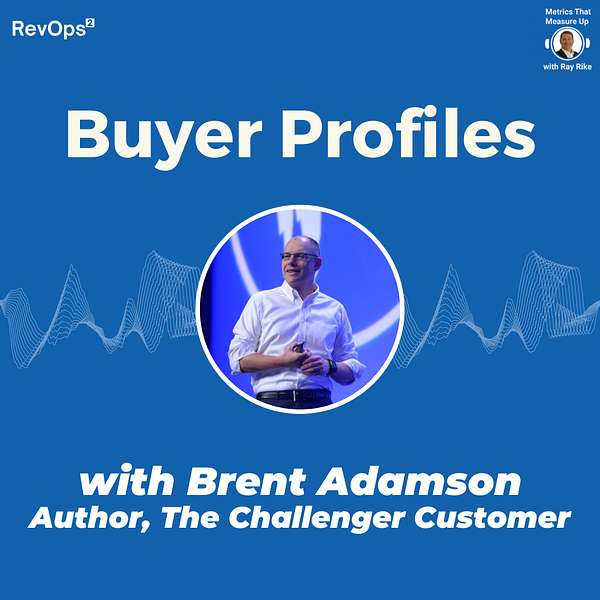
Metrics that Measure Up
Metrics that Measure Up
The Different Buying Team Profiles - with Brent Adamson, author the Challenger Customer
Heading into 2023 companies are preparing for larger buying teams, and increased scrutiny on every purchase. I could not think of a better backdrop to speak with Brent Adamson, the author of The Challenger Sale and The Challenger Customer.
The Challenger Customer is based on research focusing on the different "profiles" of the buying team in a considered "SaaS" purchase. This is one of my all-time favorite books focusing on how to understand the buying process and charting the sales process accordingly.
We started the conversation with a comment Brent recently made on another podcast, and that was "the SaaS industry has broken sales". As we double-clicked on this comment, what Brent was highlighting was that due to the large influx of capital and thus the number of companies increased so quickly, sales became more of a volume-centered process versus the more traditional, value-based, solution selling that traditional software companies used before the "growth at any cost" phase of the SaaS industry evolution.
Another variable that impacted the volume-centric approach was the rapid evolution of "Sales Technology" which automated many of those processes that were traditionally executed manually by a sales professional. As a result, many sales professionals over-indexed activity and volume and lost some level of attention to what makes each target account and the individual members of the buying team unique.
When Brent conducted the initial research to write The Challenger Sale, one consistent truth uncovered was that no single buyer, not even the executive decision maker wants to make a decision isolated from the broader team. Their driving need is to gain team agreement or consensus on strategic purchases - such as SaaS solutions.
In the initial book, it was discovered that there were 5.4 individuals in every strategic purchase decision, and that number has consistently increased over the last few years - hitting 11 or even more in 2022. Though even though this number is significant, the more important aspect of this reality is the "diversity" of the profiles, functions, roles, and decision criteria for a strategic purchase.
The above was the basis for Brent's second book, The Challenger Customer. The first topic we discussed was the different profiles of members of the buying team who are "mobilizers".
What is a mobilizer? Based upon a survey of 2,000+ B2B Sales Professionals, the top performers identified that the most important attribute of a buyer persona was their ability to build consensus and willingness to drive change in their organization. This is much different than the standard, find a coach, champion, or executive decision-maker in the sales process. What are the different types of "mobilizers":
- Skeptic
- Go-Getter
- Teacher
Skeptics typically are the most difficult to accept the value proposition of your solution and how it will work in their environment. However, once the skeptic is won over, they will be the best advocate for your solution being purchased and implemented.
On the other hand, the "friends and the guides" may want to talk with you more than anyone else at the potential customer, but are not good at mobilizing change in their company.
Next, we discussed the importance of tapping into the "emotions" of the buyer. It comes down to the concept of "Identity Value" and goes beyond company value or professional value. Identity Value is the value that sponsoring a purchase will impact how a person feels they are viewed and how they view themselves. Once a person feels your solution impacts their "identity value" it will dramatically increase their desire advocate purchasing your solution.
As we enter 2023 and encounter a "cautious capital" approach to purchasing new solutions, I cannot think of a better use of time than listening to Brent AND reading The Challenger Sale!